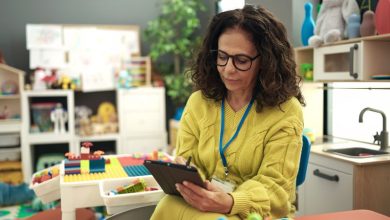Library Upgrades: Analyse your space, be flexible
The library learning hub is where many of a school's flexible learning initiatives, resources, and tools live.
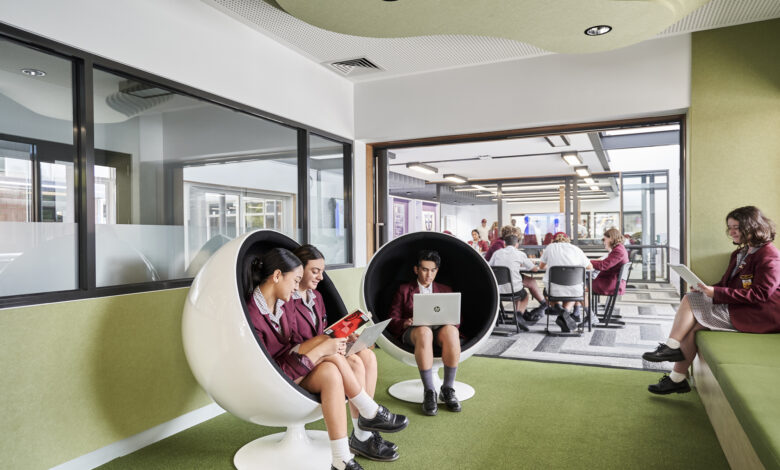
This area is often led by a schoolwide specialist in information resources, curriculum, and technology integration – the vastly skilled and tech-savvy, resourceful school librarian.
They are central to the process of leading and supporting the library’s multi-functionality. Modern school libraries feature optimum physical environments to accommodate the learning needs of students, and they come in all shapes and sizes! So, where might you start on the path to library transformation?
Analyse your space, be flexible
Take stock of your library’s layout and plan to maximise the space. It needs not only to be a welcoming environment for research and sourcing information, a place for students to sit comfortably and read, and a site of project collaboration and sharing.
Shifts like moving rows of bookshelves to the periphery of the library to allow for flexibility of floorspace and can create areas for desk-based learning, research, and comfortable reading.
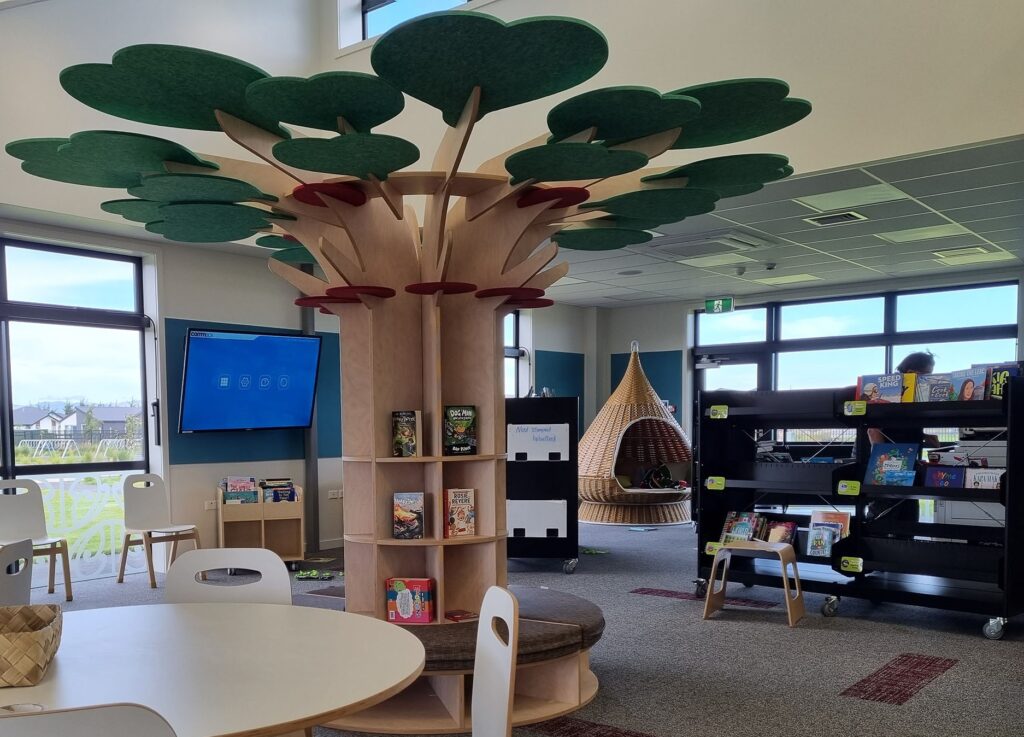
If your furnishings consist of standard fixed-leg, bulky rectangular library tables, they’ll remain rooted to the ground or need to be moved, with difficulty, to alter the configuration of the space.
Allow for flexibility by opting for easily mobile items of furniture, stackable options and modular pieces that allow you to create a variety of configurations. Accommodate theatre-style set-ups for debates and video conferences with your layout. Furniture that is easy to re-configure will provide more scope for this.
Collaboration
Working with subject teachers to provide areas that they can use differently from their classroom spaces may encourage new users of your library facilities. A successful reorganisation of the library space should include the thoughtful creation of zones of use within the overall floorplan and subject teachers are best placed to advise what will suit their and their students’ needs.
Many school libraries choose to repurpose storage space previously used for AV equipment or reems of books, to make a green-screen room for use as a project-based learning space. This can increase use of the library subjects, attracting pupils and teachers across a broader range of subject to engage with the space for project work. Having activity zones and quiet zones help structure your space and aid different work styles.
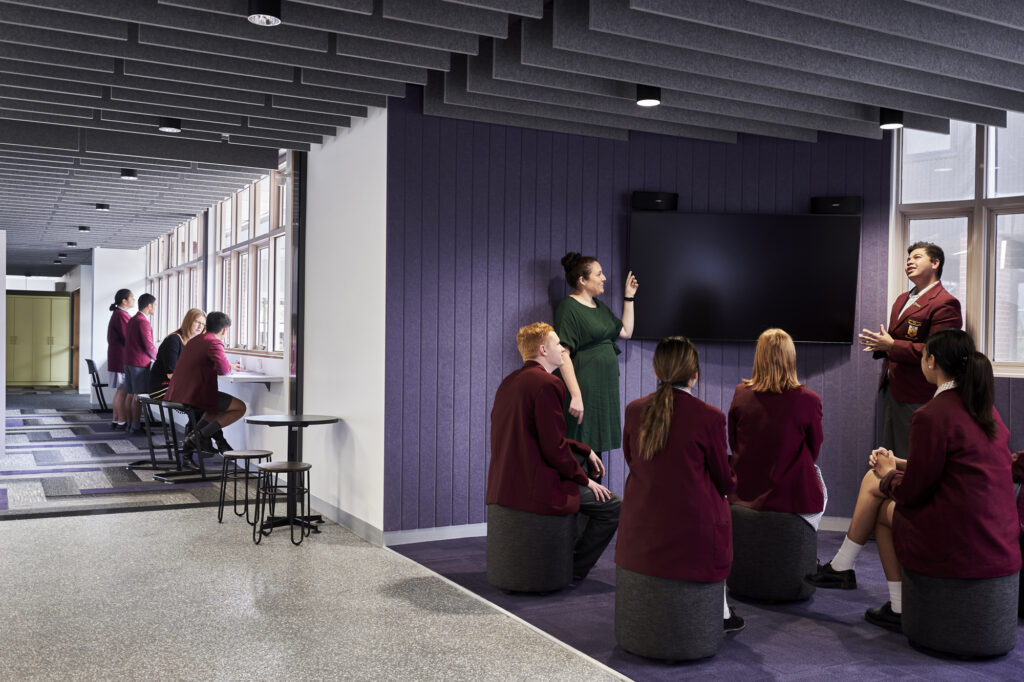
Aesthetic improvement
An injection of colour is one way to make the library more appealing, through furniture items, soft furnishings, wall colour or an often-forgotten element, artwork.
Inspire your students with prints of classic artworks that fit your school’s values. Old photographs can inspire a sense of connected heritage and can provide uniquely special library embellishments, or select a mix of book cover poster art.
Cull the clutter. Keep on top of the quality of your library resources with an annual clear out of any resources or titles that are under-par. The non-fiction collection will likely contain much information that is easily obtained online and could be removed to clear floorspace of shelving and cabinets. Weed out duplicate titles, tatty publications, and out-of-date collections to create space for new.
Read our full print magazine issue for Term 2 here.
A sound environment
Libraries have acoustic demands often not considered in the design and construction process. These issues can include noise intrusion from exterior and interior sources such as aircraft and building mechanical systems, excess reverberation in public spaces, speech communication, and intrusion from potentially adjoining spaces, such as meeting rooms.
Wall-mounted acoustic panels let people in libraries have their peace and quiet by dampening, softening, and redistributing sounds. Unlike hard, reflective surfaces, acoustic panels can trap and contain sharp sound waves, reducing background noise and minimising echoes.
Shelving can also be used to help block noise from more collaborative zones that might disturb a quiet study area. Position your cosy, quiet reading area away from the entrance and away from fiction collections, for example, where classes may often gather to enthusiastically choose books.
Industry Perspectives
Miriam Tuohy is the Senior Specialist of School Library Development at National Library of New Zealand Te Puna Mātauranga o Aotearoa, and provided some top recommendations for schools ahead of any planned library transformation…
Include your school library team in the planning phase and visit other school library spaces for inspiration.
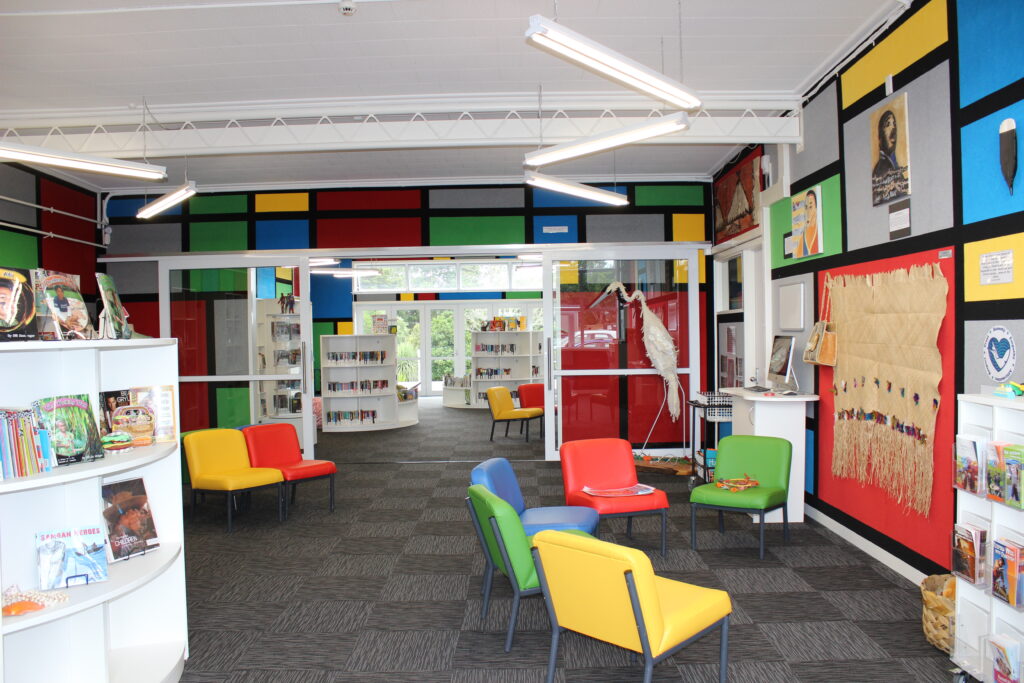
Establish a project team that combines knowledge and experience in teaching and learning, architecture and design, and library development. Involve your school community in the process and keep everyone up to date as you go. They’ll be excited to see progress reports and the end results!”
Key trend: configuring zones
Mobile shelving, and furniture that’s easy to move, stack or compact, makes it simple to reconfigure the library as needed. For example, students can move soft seating such as beanbags or cushions to find a quiet reading spot or sit together to socialise. It’s also useful to position mobile shelving, moveable whiteboards, and screens to create spaces within the larger space such as quiet study or comfortable reading areas; or move everything aside to cater for activities or community events such as whānau hui, presentations, and performances. Another tip is to replace bulky fixtures—like a built-in circulation desk—with a smaller, mobile version that gives library staff flexibility within the space as the library evolves.
Ideally, you’ll continue providing library access during a refurbishment but ask yourself three questions beforehand:
- Can you organise or partition the library, so it can be used throughout the refurbishment while keeping staff, students, books, and equipment safe and secure?
- Can you create a temporary library elsewhere in the school? Will you need to relocate or find extra shelving? Or store books, furniture, and equipment?
- Will your staff need extra hours or support to adapt your existing library, create a temporary one, or set up the refurbished space when it’s ready?
Rob Jones is Autex Acoustic’s Technical and Development Manager, and let us know the key acoustic recommendations for school library upgrades…
Now that libraries are no longer just a place to find a book but function as multipurpose media centres, where group gatherings occur regularly, and audio-visual events are often happening alongside individuals studying and researching; library acoustics are more noticeable than ever.
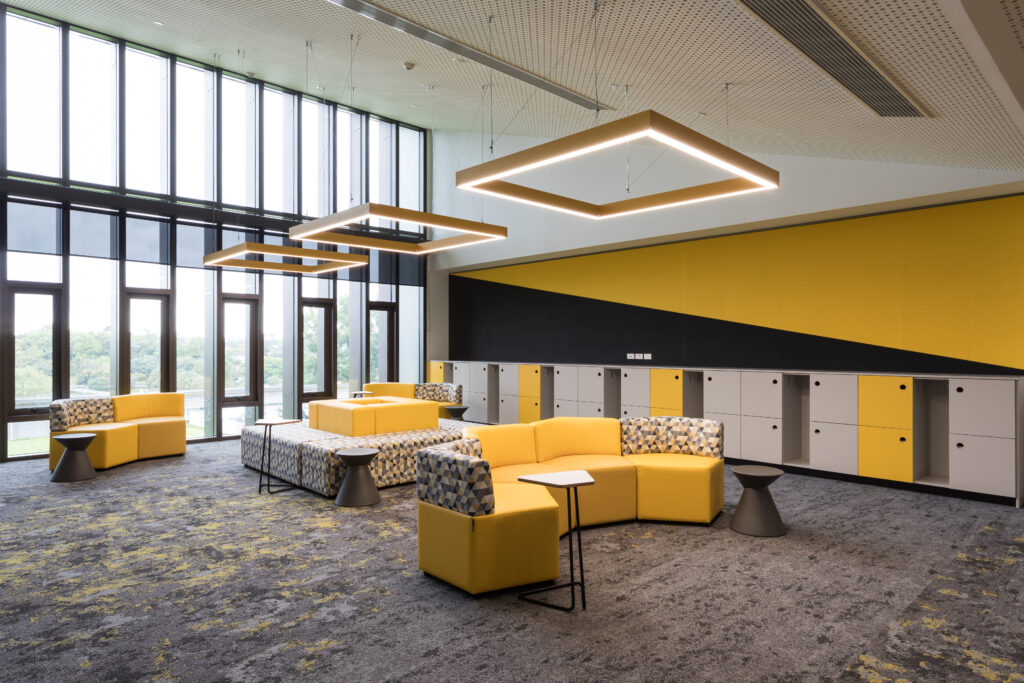
As library use continues to diversify, their acoustic requirements will continue to complexify. For this reason, the placement and use of noise absorbing surfaces, ceiling structures, and absorptive furniture are important as they all work to help lower noise levels and attenuate noise flow via reflections. Soft floor coverings help reduce noise-flow too.
Most importantly, however, acoustic planning and zoning is a key tool to help schools overcome acoustic challenges in relation to minimising noise disturbance. Zoning should consider how to maximise distance between areas where group or collaborative activities will take place. Lowering the ceiling heights with highly absorptive ceilings helps create a more intimate area, so that individuals within a group can hear each other without needing to raise their voices. These systems often can be suspended from the existing structures meaning little site works and minimal disruptions. Furniture can also create barriers to reduce direct noise flow throughout the area.
For retrofit applications and the loss of dense bookshelves, wall surfaces can be treated with noise absorbing linings that double-up as pinboards. Even old brick walls that reflect most of the sound can be transformed into features with little building work.
Heinz Woodman is a representative from Learning Spaces Global and spoke with us about emerging design trends…
Design trends have changed the way indoor spaces work and a lot of research shows what benefits these changes may have to learning.
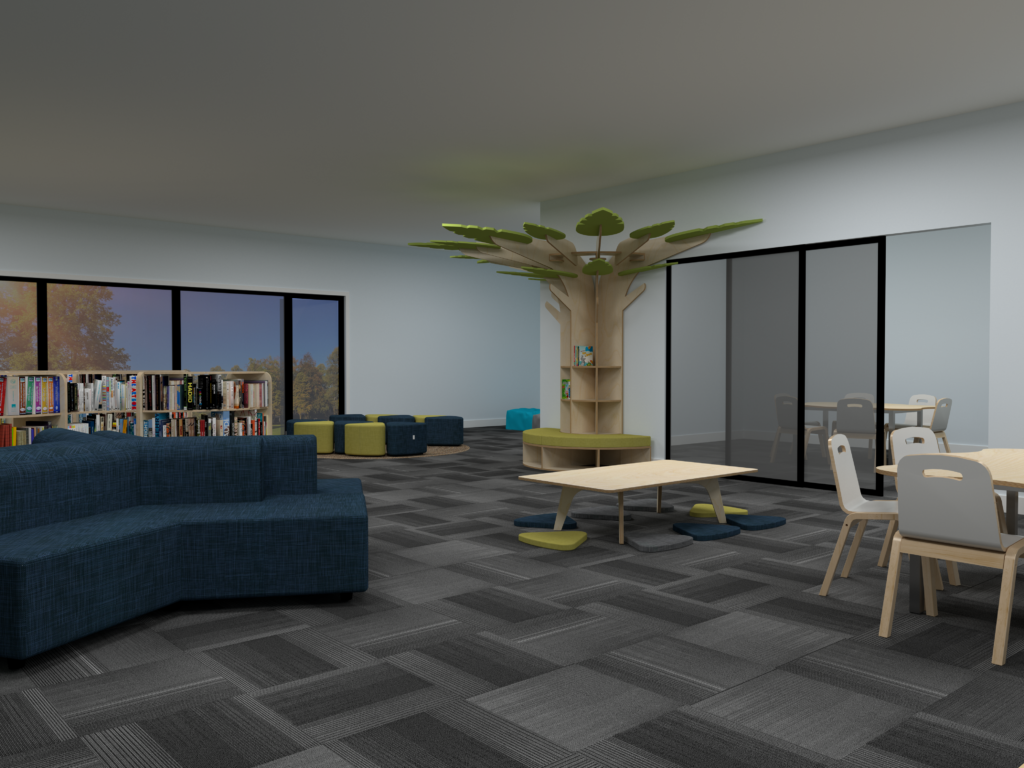
One aspect is increased emphasis on collaboration and group study. Schools should choose different shaped tables that can be separated or pushed together for different sized groups, as well as smaller ottomans and sofas; all shelving and storage should be on castors to adapt the space to different groups.
Biophilic design is increasingly popular as it brings the outside in by using plants and other natural elements. Plants can sit on top of furniture or along the walls. Plenty of large, open windows and doors also help fill the space with light and boost airflow too.
Creative spaces tap into the personality of each school: Why not replace a traditional bookcase with a large plywood tree for book storage, fabric and acoustic leaves intact? School libraries love to include a reading nook that students can curl up in with a book, squab seating beside a window, large floor cushions and comfortable rugs, as well as hanging acoustic shapes to reduce unwanted noise. There is no shortage of creative options.”





